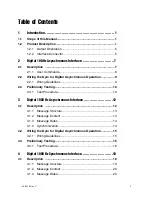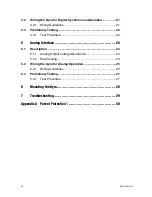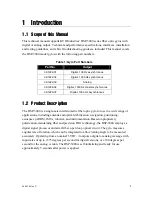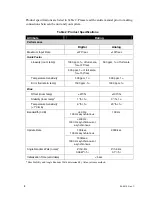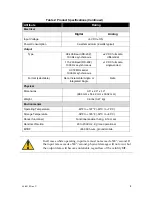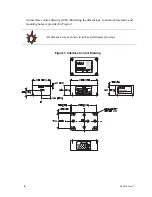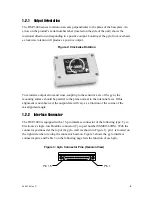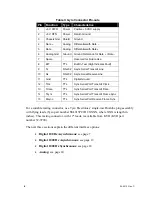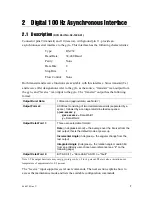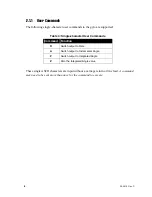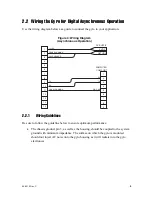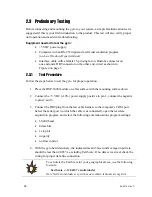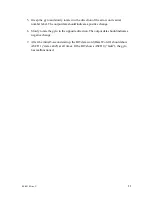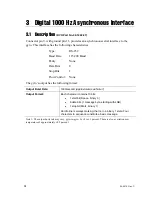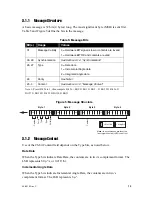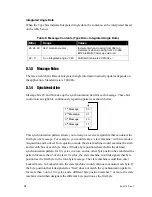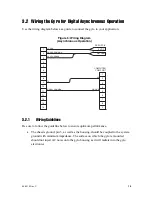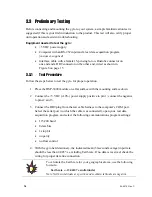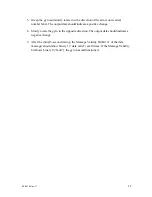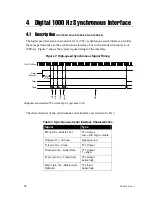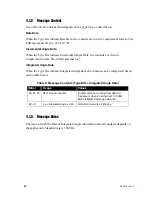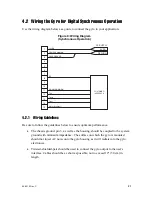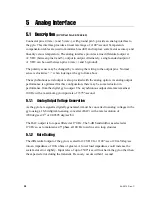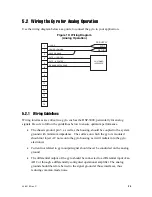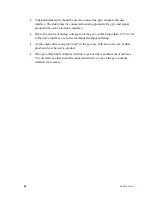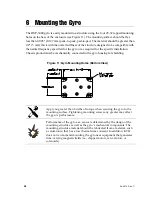
54-0215 Rev. C
13
3.1.1 Message
Structure
A basic message is 32 bits (4 bytes) long. The most significant byte (MSB) is sent first.
Table 5 and Figure 5 define the bits in the message.
Table 5: Message Bits
Bit(s)
Usage
Values
31
Message Validity
0 = Hardware BIT signal is low or contents are invalid
1 = Hardware BIT OK and contents are valid
30, 29
Synchronization
See Section 3.1.4, “Synchronization”
28, 27
Type
0 = Rate data
1 = Incremental Angle data
2 = Integrated Angle data
26 Parity
See Note 1
25 - 0
Content
See Section 3.1.2, “Message Content”
Note 1: Preset Bit 26 to 1, then compute Bit 26 = Bit 0
⊕
Bit 1
⊕
Bit 2…
⊕
Bit 25
⊕
Bit 26
⊕
Bit 27
⊕
Bit 28
⊕
Bit 29
⊕
Bit 30
⊕
Bit 31.
Figure 5: Message Structure
3.1.2 Message
Content
Use of the 26-bit Content field depends on the Type bits, as noted below.
Rate Data
When the Type bits indicate Rate Data, the contents are in two’s complement format. The
LSB represents 60 µ°/s, or 0.216
°
/hr.
Incremental Angle Data
When the Type bits indicate Incremental Angle Data, the contents are in two’s
complement format. The LSB represents 6 µ°.
Byte 1
Byte 2
Byte 3
Byte 4
24
31
16
23
8
15
0
7
V
alidity
Sync
T
ype
P
a
rity
Content
= Start Bit
= Stop Bit
Content
Note:
In asynchronous protocol, the
least significant bit (LSB) is sent first.

